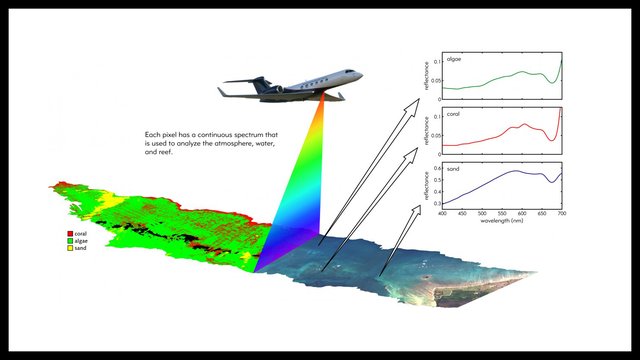Lesson .
.Coral Calculus: A 'Pi in the Sky' Math Challenge
Overview
The "Pi in the Sky" math challenge gives students a chance to find solutions to real-world problems all while using math and pi just like NASA scientists and engineers. In this problem from the seventh installment of the set, students use the mathematical constant pi to measure the water depth of an area mapped by the CORAL mission.
Materials
- Pi in the Sky 7: Coral Calculus – Download PDF
- Pi in the Sky 7: Coral Calculus answer key – Download PDF (also available as a text-only doc)
Background

Coral reefs provide food and shelter to many ocean species and protect coastal communities against extreme weather events. Ocean warming, invasive species, pollutants, and acidification caused by climate change can harm the tiny living coral organisms responsible for building coral reefs. To better understand the health of Earth's coral reefs, NASA's COral Reef Airborne Laboratory, or CORAL, mission maps them from the air using spectroscopy, studying how light interacts with the reefs. To make accurate maps, CORAL must be able to differentiate among coral, algae and sand on the ocean floor from an airplane. And to do that, it needs to calculate the depth of the ocean at every point it maps by measuring how much sunlight passes through the ocean and is reflected upward from the ocean floor. In Coral Calculus, students use pi to measure the water depth of an area mapped by the CORAL mission and help scientists better understand the status of Earth's coral reefs.
Procedures
Coral Calculus
Flying aboard an aircraft, NASA’s CORAL mission uses spectroscopy to study the health of coral reefs and the threats they face. To differentiate among coral, algae and sand on the ocean floor, CORAL computes the depth of every point it maps. The water’s depth can be determined using the “absorption coefficient,” indicating how much light is absorbed through a given depth of water.
Imagine CORAL collects a light measurement reflected by white sand covered by an unknown depth of water that is 76% in the blue and 4.5% in the red. Using the formulas below, calculate the water’s depth. Note that sunlight passes through the water twice: when traveling from the Sun to the ocean floor and when reflecting up to the aircraft.
absorption coefficient, α = (4πk)/λ k = coefficient of the imaginary number portion of the refractive index λ = wavelength (meters) of light observed
Beer-Lambert law, T = e(-α•d) T = observed reflectance, or transmittance (T), of light through a distance (d) of water
Refractive Indices:
- Water in the blue wavelength (450 nm) = 1.3369 + 1.01E-09i
- Water in the red wavelength (650 nm) = 1.3314 + 1.60E-08i
Assessment
Extensions
Participate
Join the conversation and share your Pi Day Challenge answers with @NASAJPL_Edu on social media using the hashtag #NASAPiDayChallenge
Blogs and Features
Related Lessons for Educators
Related Activities for Students
Multimedia
Facts and Figures
Missions and Instruments
Websites
Lesson Last Updated: Oct. 11, 2024













